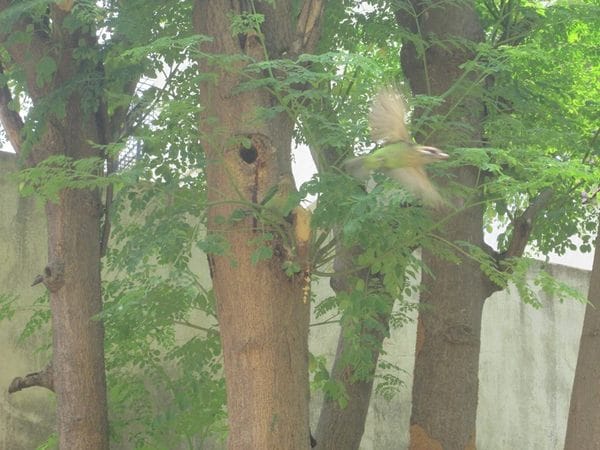
Pic: Aditi Surendra
Bengaluru had many lakes 40 years ago. Today there are a very few lakes left today. Most of the lakes like Varthur lake, Sarakki lake, Banaswadi lake etc. have been or are being destroyed because a few greedy, inhuman, insensitive and socially irresponsible people cause wanton destruction and grab the land as real estate prices go sky high.
The Varthur lake is being filled with sewage and other chemicals. Once the lake is dead, these people can say the land is unfit to be a lake and use it to construct buildings. This is done to circumvent the Court’s directives. The Court had directed the authorities to clear all lake encroachments.
The same principle is applied to trees as well. First weaken the trees by cutting its roots, pouring cement, limestone or acid around the roots, and let the rain do the rest. Unfortunately, people blame the rain for the trees falling down, but fail to understand the root cause behind this issue. In the name of clearing weak trees, many trees are cut, to make signboards and advertisements more visible. These are all loopholes in the Court’s directives.
This is blatant daylight murder of the environment and ecosystem. Obviously, this is done in connivance with the people who are responsible for maintaining the land and environment—the BBMP, Land Revenue office, PCB, BWSSB etc. and the politicians. The main victims are the people who are natives of Bengaluru and people who have paid their life’s savings to so-called owners of tank beds, grave yards etc, who have created land records and sold it.
The Kensington Swimming pool (Ulsoor lake swimming pool), which was destroyed 20 years ago in the name of Asiad games is an example of greedy vested interests. This swimming pool catered to people of the lower and middle class population in the area. But it was destroyed because the politicians and officials did not get any kickbacks (bribes, mamool, hafta) from this pool. At the same time, private swimming pools were developed which provided commissions and weekly/monthly bribes to these officials. The people of this locality have lost a very good health pastime.
The solution to this is, citizens should take up the task of rejuvenating lakes. They should take cudgels against people responsible for this mess by confiscating and attaching all their family assets, movable and immovable property etc. and use the same to clean, rejuvenate and bring back a greener, healthier Bengaluru.
Related Articles
Bangalore must become an inclusive city
Bengaluru citizens join hands to save lakes
Bengaluru lakes can be saved, prove citizens
Saving a dying lake just got easier, with court mandate
How to revive your neighbourhood lake
Mr. George the erstwhile home minister’s home and golf course inside Embassy links is on the Chalaghatta Lake. Encroachment by law makers themselves. Asshole!